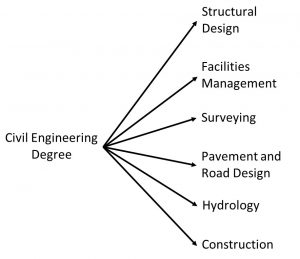
www.123rf.com – 27430292
Congratulations Women! We are now earning 57% of the college degrees!! Whoo-hooo! We will soon close that nasty wage gap and have equal representation in the workplace all the way up to the board room. Right?
Not quite.
When we focus just on getting a degree, any degree, we ignore the two other factors that contribute to wages and promotion.
- What you get your degree in.
- The type of job and career path you take after you get your degree.
The reality is that not all college degrees are of equal value. Given the high cost of a college degree, everyone should first ask themselves “What kind of job am I going to get with my degree? Is it a good investment?”
For example, I was recently talking to a woman who was very proud of her daughter who was getting her PhD in Art History. I bit my tongue instead of asking her, “And what kind of job will she be getting with her PhD?”
When I got home I looked up the program. Just the tuition was $25,000 per year for the 3-year program. Adding in the costs for her bachelors and masters degrees, we can assume this young woman has invested a small fortune in her education. But what is the return on her investment going to be?
If we look at college majors from the perspective of Return on Investment, we see two categories:
The first category are majors that provide the specialized knowledge required to enter a profession. These majors include architecture, accounting, engineering, nursing, doctor, elementary education, computer science and law. Trade and vocational programs also fall into this category. After receiving your degree, you have clearly defined options for your career path and you choose which option you want to follow. Jobs are offered to you because employers recognize your value to them.

The second category are degrees that don’t result in clearly defined career paths. These degrees give you knowledge in an area, but that knowledge isn’t easily convertible to a job. After graduation you can be left wondering, “Now what do I do?” It can not only be difficult to find a job, it can be difficult to find one that pays better than if you never went to college at all. Many liberal arts degrees fall into this category. The most popular degree, Business, can also fall into this category.
Before we pursue a college degree we have to remember that companies are in specific industries and they want to hire people with the knowledge, skills and experience specific to their industry. Therefore, a liberal arts or generic business degree may not be very valuable in securing a higher paying job right out of college. The return on your investment may not come until several years later.
Today too many women still get college degrees that don’t translate to high paying careers. Women still get too many degrees in the second category just like we did in the 19th and 20th century when women were expected to marry and become housewives. And when women get degrees from the first category, we choose majors that lead to the lower paying jobs. In short, not enough women are getting degrees that lead to financial independence, financial security and allow them to support their family as a single mother.
Last year Glassdoor published a study, The Pipeline Problem: How College Majors Contribute to the Gender Pay Gap. It verified:
- Men opt to for the highest paying majors. Of the top 10 highest paying majors, 9 are heavily male dominated.
- Women opt for lower paying majors. The one exception is Nursing. It is in the top 10 highest paying majors and heavily female-dominated.
- When men and women have the same degree, men choose higher paying career paths than women.
The study concluded that 54% of the gender pay gap is attributed to “occupation and industry sorting of men and women into different jobs that pay differently throughout the economy.”
In other words, 54% of the gender pay gap is attributed to the degrees and career paths women choose.
The gender pay gap begins with our selection of college majors
The study also revealed something else that was very interesting – a reverse pay gap in some professions. In others no pay gap. Even more interesting is that most of these are in the highest paying professions.
Architecture – women earn 14% more.
Advertising – women earn 8.1% more
Environmental Science – women earn 6.8% more
Chemical Engineering – women earn 5.4% more
Kinesiology – women earn 4.9% more
Mechanical Engineering – women earn 3% more
Accounting, Finance, Civil Engineer and Nursing – no pay gap
Personally, I am not surprised by this at all.
I believe that in the 21st century many traditionally male-dominated professions – engineering, architecture, accounting, finance, medicine and statistics – are actually better suited for women than men. Women should dominate these professions. I explain why in my book The Woman In The Room: How I Discovered the Unique Value of Women in the Male-Dominated Workplace.
Celebrating that women get 57% of college degrees is celebrating a gee-whiz fact. How many college degrees women doesn’t change anything if we aren’t choosing college majors and choosing career paths comparable with what men choose.
It’s time to evolve out of our mid-20th century mindset and realize that in the 21st century the male-dominated professions are a goldmine of opportunity for women. If we apply ourselves correctly, we can not only close the wage gap but reverse it in many of the highest paying professions.
Empowered Women Don’t Get “MRS Degrees”
Find this article helpful?
Sign up to receive more
Follow The Woman In The Room on Facebook

